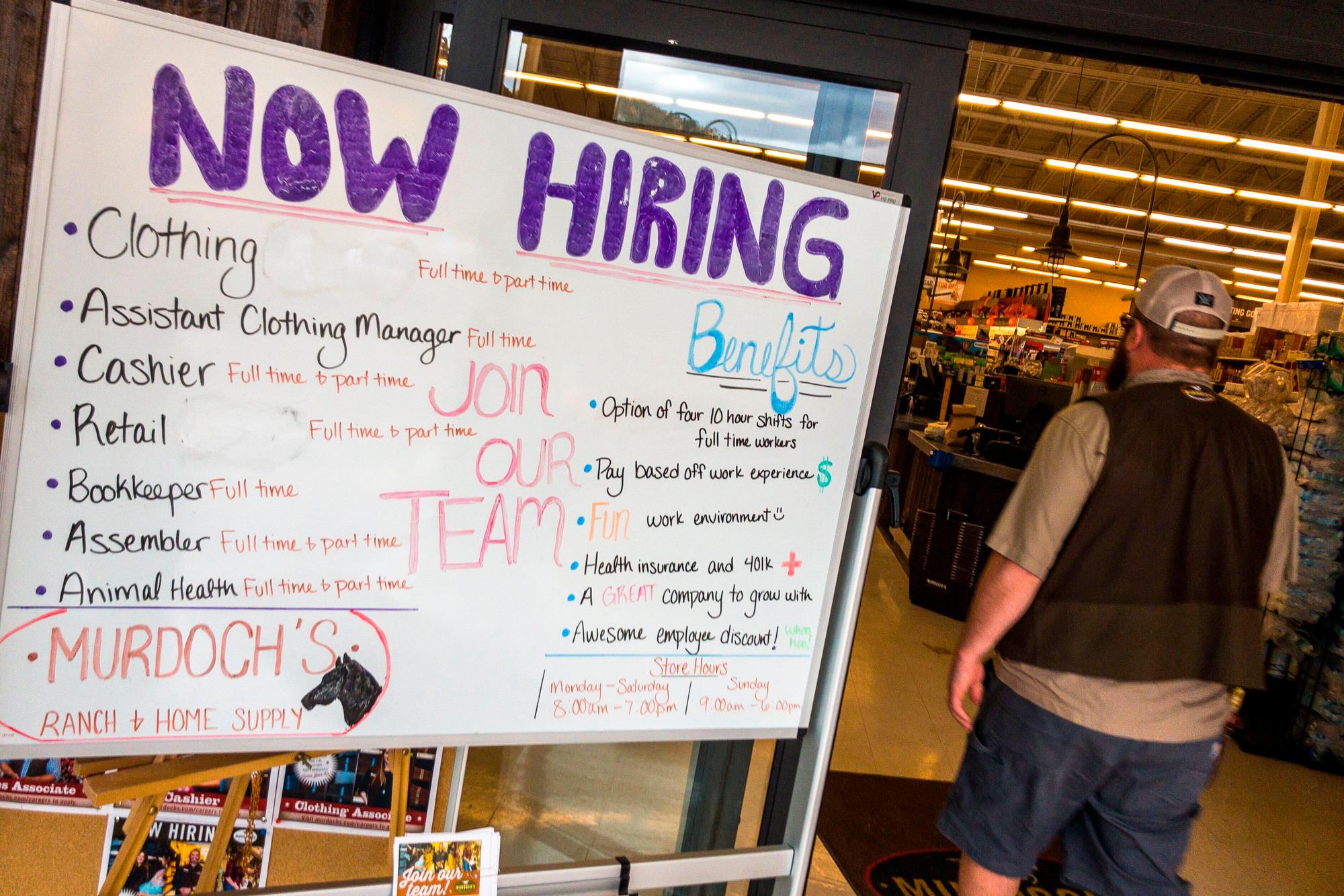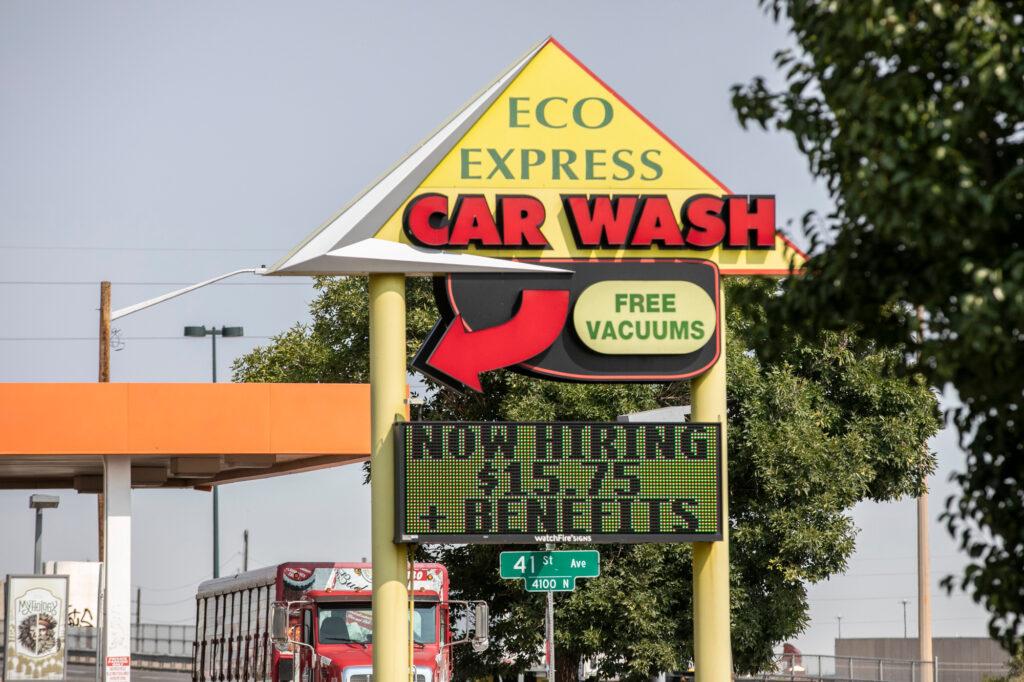
The data is sending mixed messages about the state of Colorado’s economy.
The state’s monthly jobs numbers are all over the place lately. A blockbuster month with thousands of new jobs can be followed by a month of big losses. The monthly swings are making it hard to get a handle on what’s actually happening with Colorado’s job market.
“Even I -- who does this for a living -- I'm having difficulty being, like, what is actually going on now?” said Colorado state economist Ryan Gedney. “I have tools at my disposal and years and years of expertise, but still, it's been very challenging.”
Part of the problem is that initial estimates have been way off. The monthly statistics are calculated using businesses’ responses to a survey. A lot of times, companies don’t respond right away, which leads to big changes as additional information trickles in.
For instance, the initial numbers indicated the leisure and hospitality sector in Colorado lost 3,500 jobs in July. Four weeks later, that had shrunk to a loss of 1,300 jobs. That’s pretty standard these days. Take June’s overall numbers, which were 2,900 jobs too high the first time around.
Apparently, a lot of businesses aren’t responding at all. The response rate has fallen off dramatically since the pandemic, though it’s not clear exactly why. Nationally, 60 percent of businesses responded to the employment survey in January 2020, according to the Bureau of Labor Statistics. As of June, the response rate was 40 percent.
The response rate isn’t broken down by state, but Colorado’s mirrors the national trend, Gedney said.
“The lower the response rate is, the higher the volatility is,” he said.
All of this is making for some wonky readings at a crucial juncture for the job market. Federal regulators have been raising interest rates for more than a year to fight inflation. The goal is to slow demand for goods by making it more expensive to borrow money.
Sticking a pin in demand typically leads to fewer jobs, and eventually, a recession. That hasn’t happened yet, but financial prognosticators have been watching for one around every corner. That’s led to an intense focus on the job market.
“There's many gauges to look at what the health of economies looks like. But certainly labor market data is one of the key ones,” Gedney said.
It’s helpful to zoom out of the monthly statistics to get a better picture of hiring trends, even if the data isn’t perfect.

Over the past 12 months, accommodation and food services is by far Colorado’s biggest gainer, with 23,000 jobs added. That’s followed by the government, with 16,700 new jobs. Colorado is part of a nationwide trend in the public sector. Nearly one-fifth of all jobs created in the U.S. this year were government jobs, according to the Bureau of Labor Statistics.
At the other end of the spectrum, the biggest loser in Colorado is finance and insurance, with a loss of 7,500 jobs. That makes sense, since businesses like investment advisers and lenders – which are highly sensitive to changes in interest rates — are in this bucket.
Another laggard is somewhat less intuitive. The administrative and support and waste management sector has lost 6,700 jobs in the past 12 months. It sounds odd that the waste management business would be suffering. But it makes more sense once you drill down into what that category actually covers. It’s a hodgepodge, Gedney said. The biggest drag on the group is actually temporary employment services, he said.
But Gedney points out those numbers are still just an approximation. And not a particularly good one. The state’s jobs data are refined throughout the year using the Quarterly Census of Employment and Wages, or QCEW, which is sourced from unemployment insurance reports. Companies are legally required to submit this information, making it a far more reliable data set compared to what you get when the government asks politely. The QCEW captures about 98 percent of all wage and salaried jobs in the state.
The problem is there’s a significant lag time. Colorado’s labor department publishes estimates based on QCEW data several times a year, but they cover what happened four to seven months earlier. It’s difficult to get people to pay attention to a bunch of numbers that point to what amounts to old news.
“We used to actually have a press call for that. That kind of stopped back in 2019. We had maybe one reporter call in,” Gedney said. “And then when we had zero, I was like, ‘all right, we’re killing it’.”
The most recent QCEW update came out last month. It showed that Colorado's jobs were undercounted by 27,000 in March. The numbers will change slightly when they are scrubbed one last time to account for adjustments in how seasonality is measured, but they shouldn’t change that much, according to Gedney.
Colorado stands to gain some of the ground it’s lost when it comes to job growth once all the numbers are in. The state’s growth has been lagging the U.S. rate by quite a bit, a perplexing and atypical trend. In Colorado, payrolls have grown by 1.5 percent this year, compared to the national rate of 2 percent.
“When we incorporate these expected revisions, the picture looks a lot better,” Gedney said.









